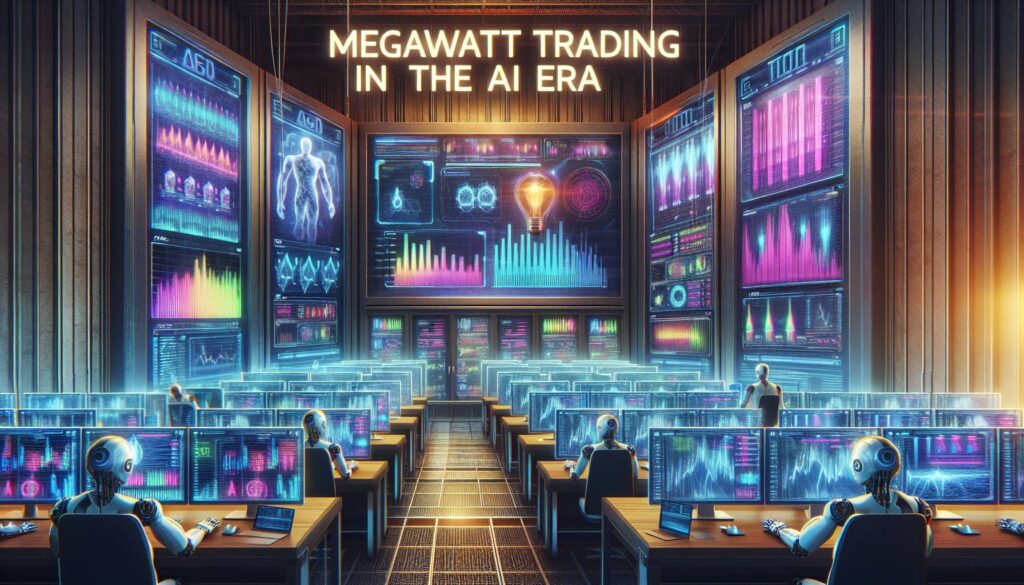The cryptocurrency landscape is experiencing significant turbulence, as highlighted by JPMorgan’s recent report on publicly-listed U.S. bitcoin miners. In February, the total market capitalization of the 14 miners tracked by the banking giant plummeted by 22%, coinciding with a downturn in bitcoin prices and mounting pressure on mining economics. This development comes at a time when interest in alternatives like artificial intelligence is dramatically influencing market dynamics, particularly following the recent DeepSeek AI announcement.
According to the report, revenue and profitability for bitcoin miners took a notable hit last month. Average earnings dipped to ,300 per exahash per second (EH/s), marking a 5% decrease from January. The decline in daily block reward gross profit was even steeper, slumping by 9% to ,500 per EH/s. These figures underscore the growing challenges facing miners as they navigate fluctuating market conditions.
“The average network hashrate rose 3% to 810 EH/s last month,” analysts Reginald Smith and Charles Pearce noted, emphasizing the increasing competition among miners.
In addition to the drop in earnings, mining difficulty rose by 2%, making the current state of mining 28% more challenging than it was before the last halving event in April 2022. This sudden increase in difficulty coupled with fluctuating profitability puts miners in a precarious position. Notably, Core Scientific managed to limit its losses to a 9% drop, establishing itself as the best performer among the tracked companies, while Greenidge Generation faced a steep 36% decline, highlighting a stark contrast in performance within the industry.
As investors and industry watchers try to decipher the implications of these shifts, the evolving relationship between bitcoin mining and emerging technologies like AI also calls into question the future landscape of cryptocurrency. The result is an ongoing dialogue about sustainability, profitability, and the very structure of the mining ecosystem.

Impact of Bitcoin Mining Market Trends
The recent trends in the bitcoin mining sector have significant implications for investors, miners, and the broader cryptocurrency market. Here are the key points from the report:
- Market Capitalization Decline
- The total market cap of 14 publicly-listed U.S. miners dropped by 22% in February.
- This decline correlates with a decrease in bitcoin (BTC) prices, suggesting a direct impact on mining economics.
- Impact of High-Performance Computing (HPC)
- Miners with HPC exposure experienced losses following the recent DeepSeek AI announcement.
- Concerns over near-term demand for data center capacity may affect future investments and profitability.
- Revenue and Profitability Trends
- Average bitcoin mining revenue fell by 5% month-over-month to ,300 per EH/s in February.
- Daily block reward gross profits also saw a decline of 9%, down to ,500 per EH/s.
- Network Hashrate and Difficulty Increase
- The average network hashrate increased by 3%, reaching 810 EH/s.
- Mining difficulty rose by 2%, indicating an increasingly competitive mining environment.
- Current network difficulty is now 28% above levels before the halving event in April, affecting profitability for miners.
- Performance of Individual Miners
- Core Scientific (CORZ) was the best performer with only a 9% drop.
- Greenidge Generation experienced a significant 36% decline, highlighting the disparity in performance among miners.
These developments may impact investors’ decisions in the cryptocurrency landscape and pose challenges for those involved in bitcoin mining operations.
Comparative Analysis of Bitcoin Mining Trends in February
The recent report by JPMorgan highlights a challenging month for publicly-listed U.S. bitcoin miners, with a notable 22% decline in market capitalization amid falling bitcoin prices. This news aligns with a broader trend observed within the cryptocurrency sector, where fluctuations in asset value and evolving market dynamics are common. However, several key factors distinguish this scenario from similar occurrences previously reported in the mining sector.
Competitive Advantages: One of the critical advantages highlighted in JPMorgan’s findings is the rise in average network hashrate, which increased by 3% to 810 EH/s. This suggests that while individual miners are facing revenue drops, the overall capacity and competition within the mining ecosystem remain robust. Companies that can adapt to these fluctuations, like Core Scientific, which performed relatively better with a 9% drop, might leverage their operational efficiency and technology to capture greater market share as less adaptable miners falter.
Competitive Disadvantages: Conversely, miners experiencing drastic declines—with Greenidge Generation suffering a steep 36% drop—indicate the significant vulnerabilities present in the industry. The increased difficulty level, now 28% higher since the last halving, creates additional pressure on profitability. This situation could benefit larger, more capitalized firms that can absorb short-term losses better than smaller entities struggling with debt or operational costs.
While the report showcases the pressures faced by the mining industry, it may also open avenues for strategic acquisitions. Larger firms might capitalize on the struggling companies’ diminished valuations, driving consolidation in a market characterized by high volatility. On the downside, new entrants may find it increasingly challenging to justify investments in a sector where profitability is under constant threat.
Ultimately, the current landscape could create problems for smaller miners lacking technological agility or financial backing. As demand for data center capacity fluctuates amid growing concern over AI workloads, those miners with a high exposure to HPC may need to rethink their strategies or risk obsolescence. On the other hand, established players with scalable operations might find this a prime opportunity to redefine their market positions as they adapt to a rapidly transforming environment.
















